You might have read my post on the dreams of a little boy in Eastern Germany lately. Well, now, two days after our national holiday, Germany´s Re-unification celebration that takes place on the 3rd of October, I want to publish a follow up on this one: Now that I embarked “officially” on my own transatlantic journey – the #atlanticloop as I shall call this project from now on – I want to keep you guys updated on how I tackle this task. There´s a load full of things ahead to cross off my list: The boat need to be fitted, I need some technical equipment, new sails and all sorts of other items. But I also need to gather more information on the transat-issue. Here´s how I am going to do it.
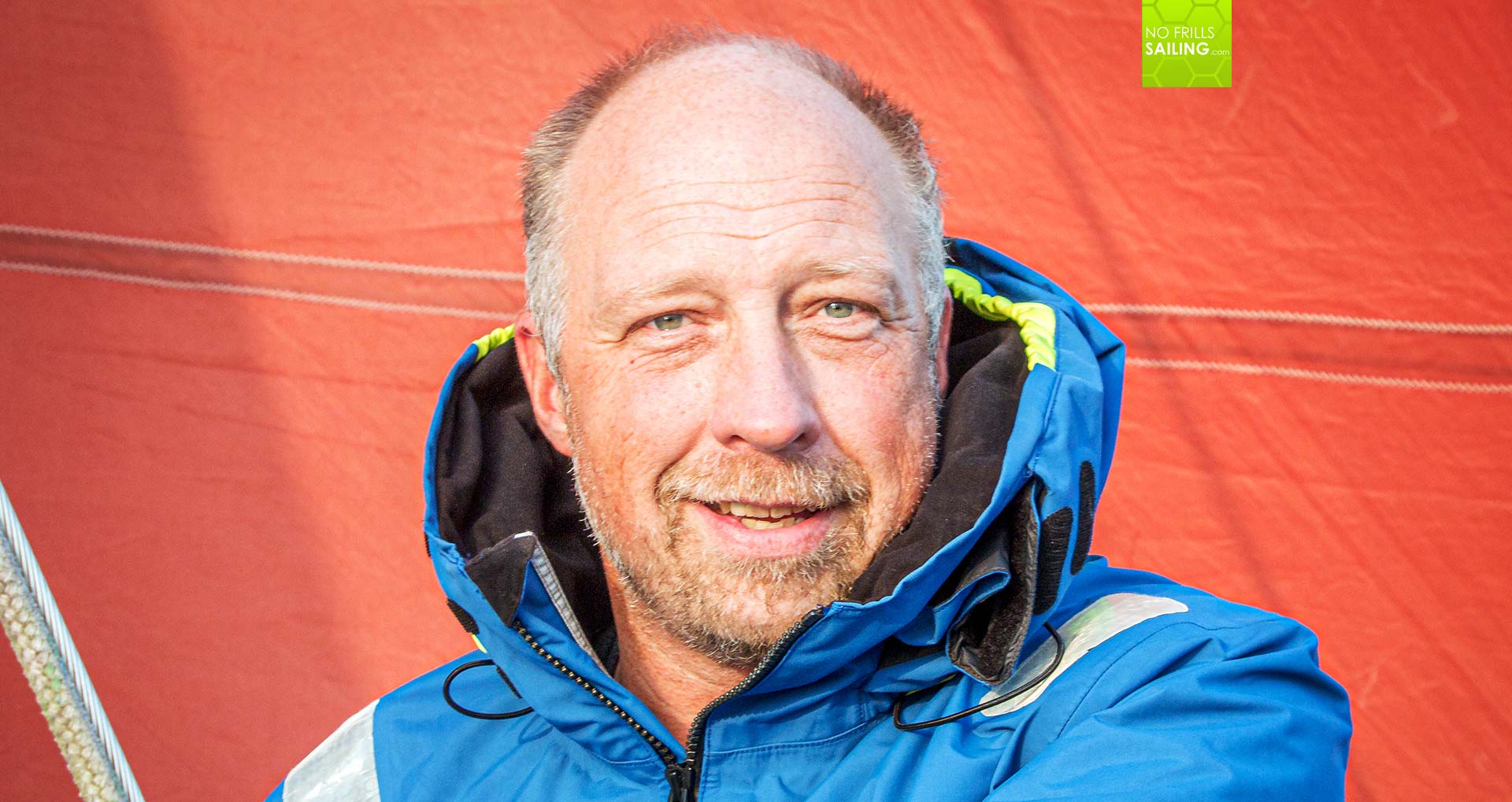
Why not benefit from the rich experience of people who already did it? I mean, if I can prevent myself from falling to the same mistake other already circumvented, why not? If I can learn from the findings of guys who sailed the loop in their own boats, let´s do it! So I checked in on three persons who already sailed over the Atlantic Ocean, but not just anybody. These three guys have done it in small boats, and that is the point: On a large blue water cruiser I´d say it is an easy task. But not on an 8 metre boat, like mine. So, here´s my first partner to talk about transat sailing in a small craft: Hinnerk Weiler. Hinnerk is a respected German journalist and publishes one of the recognized German sailing podcasts, the SegelRadio. I talked two weeks ago to Hinnerk – and here´s what I´ve learned.
Talking to a transat-veteran
NO FRILLS SAILING.com | Lars Reisberg “Hinnerk, good to meet you here! Let´s just dive into the topic. Tell me, when your decision was made to sail across the Atlantic Ocean, how in general did you tackle the project? What have been your major milestones during preparations?”
SegelRadio | Hinnerk Weiler “My transat experience is a bit long ago, I shall say. I started thinking about it back in 2009 during a half-year trip sailing in Sweden on my small SUMPFKUH, a 6 metre boat. I looked into my calendar and said to myself that in 2010 the big trip must take place.Up until that moment I had been working for some 5 years for the sailing magazine “Segeln” in Germany and during one of the big boat shows I plucked up my courage and … just told my boss. He just smiled and let me go …”
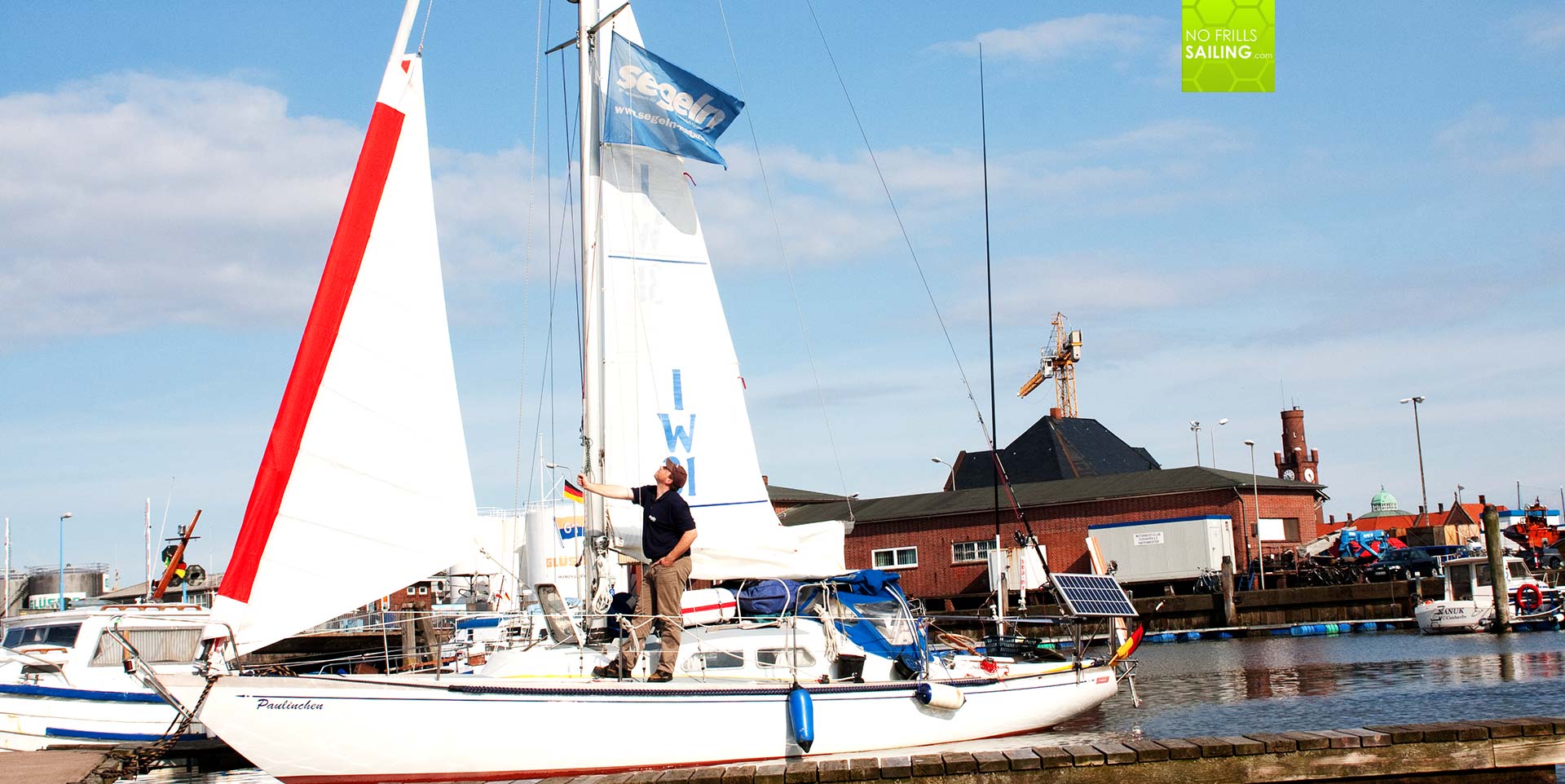
NO FRILLS SAILING.com “… yeah, just like my boss …”
Hinnerk Weiler “Exactly! Speaking of my milestones, well, there haven´t really been any. I am not that kind of planning guy. Instead, I tried to figure out what the next logical step would be … and did it. This is how I exert it in my whole life even today. So, in essence, I thought: “Where do I want to go to?”, so I pinned a big map of the world onto my wall and put stickers to the places I wanted to visit. Next was to check for best time of the year to go there: Weather, wind directions and so on. This one in itself implied the duration of the trip and so on and so on. Sometimes later I arrived at the question: “Which boat?” and when that was sorted out I looked into the financial aspects of the trip, which luckily have been largely solved as I worked for the sailing magazine and was able to sell my story there. To add this: Nearly all of my planning turned out differently in reality …”
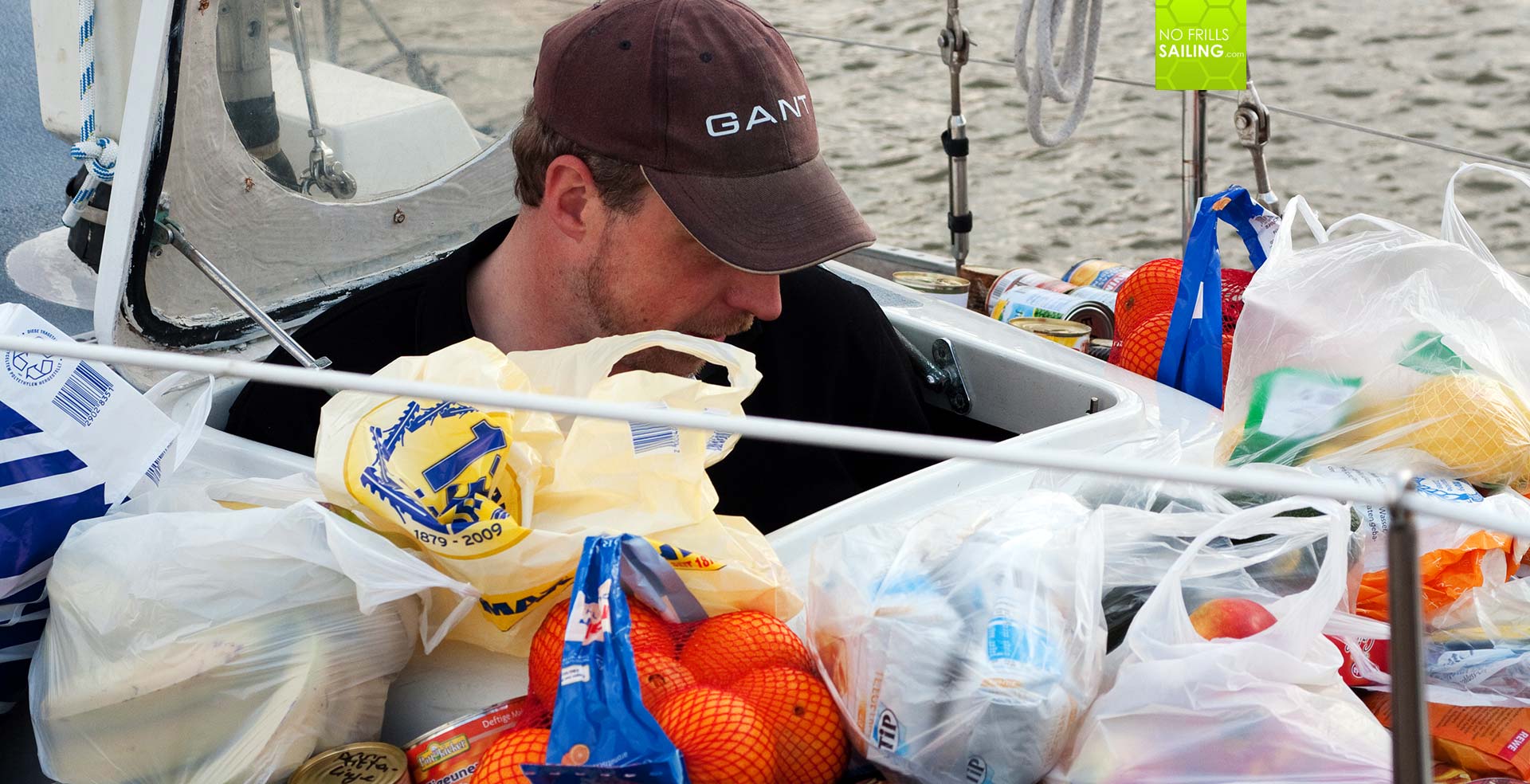
NO FRILLS SAILING.com “Let´s stick with the boat for a while. It´s the central topic for all who want to sail the Atlantic Oceean. How did you find your sailboat and what have been the general criteria for you to go for exactly the one you chose?”
Hinnerk Weiler “Well, again, I wouldn´t say that I chose my boat for specific criteria which I thought of well in advance. The boat did find me, not the other way round. And now, with some time gone by and distance to my transatlantic voyage I can say with confidence: I wouldn´t chose this one again if I had to make the choice …”
NO FRILLS SAILING.com “… oh boy! Why is that?”
Hinnerk Weiler “To begin with, it was – and still is – a very beautiful boat indeed! An IW31, a true classic by Sparkman & Stephens, built in 1973. The boat´s design dates back to 1964 just shortly before those guys started to work for Nautor and made the first Swans. I liked the sleek, classy looks and the boat seemed to be in good shape, but – it was way off my budget. I followed the advertisement some time but the price did not go down. Right on the day before I spoke to my boss about my plans, the then-owner reduced the price significantly – I went for it and bought it! I thought it was a sign from the Universe that I managed to buy this beautiful boat, so I had the spirits up and high to go an ask my boss, which, you know, went quite good as well.”

NO FRILLS SAILING.com “But why wasn´t this beauty suitable for the transat loop?”
Hinnerk Weiler “Look at it! It is not a typical blue water boat for offshore adventures: 31 feet long! That´s a nutshell. Just 2.40 metres of width and no freeboard at all. There are much better designs made for trips like this than a small 10 metre-boat, I would say.”
NO FRILLS SAILING.com “Despite your statement that you wouldn´t take her again, what did the boat already bring with her for the trip and which parts did you have to re-fit to the yacht to tackle the Atlantic Ocean?”
Hinnerk Weiler “That´s kind of a long list, Lars. First of all I quadruplicated the battery capacity. Energy consumption is a big thing and self-sustainability the first on any list. I also fitted a 50 Watts solar panel to the aft pulpit. What else? I bought a water maker, the smallest by Katadyn and – maybe that´s an unusual one – I fitted a short-wave radio to be able to send and receive packet radio data via pactor modem.
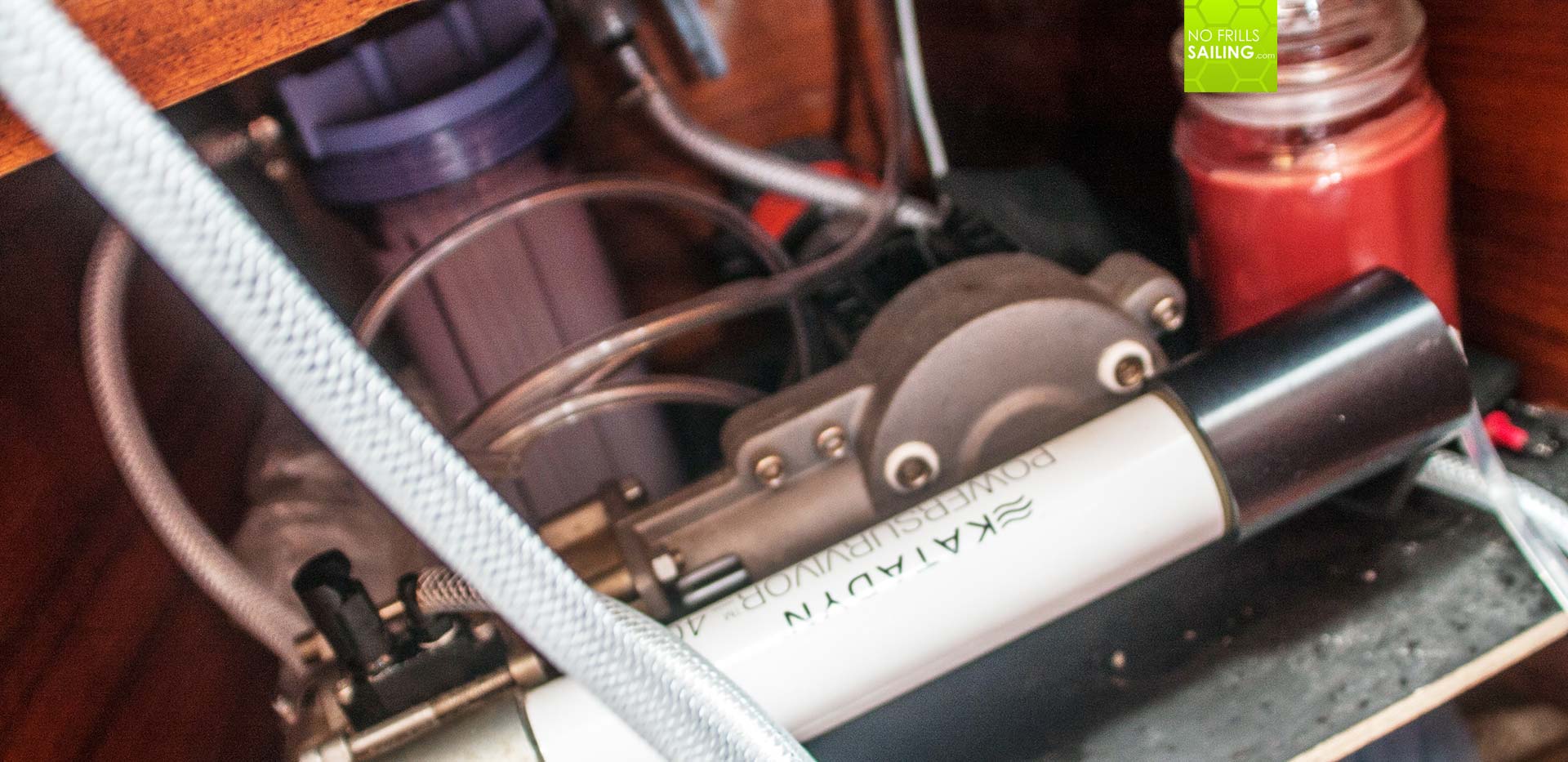
Hinnerk Weiler “Furthermore, I replaced the complete running rigging and bought a new mainsail. For downwind sailing I opted for the Parasailor by Istec (Note: I tested the similar Oxley downwind sail) and, that´s a passion of mine, fitted a complete diving set. Like the pactor modem, which is substituted today by more modern technique, I added an active radar reflector which will be active AIS today. Not to forget a wind vane. That is pretty much everything I had to put on the boat, the rest was already there.”
NO FRILLS SAILING.com “Equipment-wise: What was popping up in the process of sailing, things you maybe completely forgot to think about in the planning phase, things that took you by surprise?”
Hinnerk Weiler “Not many and not the big issues I would say. Rather small facts. Like for example the whole fresh-water thing: I didn´t really had to utilize the water maker that often. There was always enough of it in abundance. Apart maybe from Cuba where there simply is none … I also think that the whole paper chart thing is overvalued: I used the Imray 100 for crossing the Ocean and that was it. For the English Channel I used rather rough charts, later I learned that in the United Stated charts are for free so I downloaded them from the internet. I want to say: I am a guy with an extremely positive attitude. Sometimes I tend to be rather naïve. I always say to myself that if there are problems, somehow, I will be able to solve them. And that was true! You always meet people you can ask, there are always people who have something to give to you.”
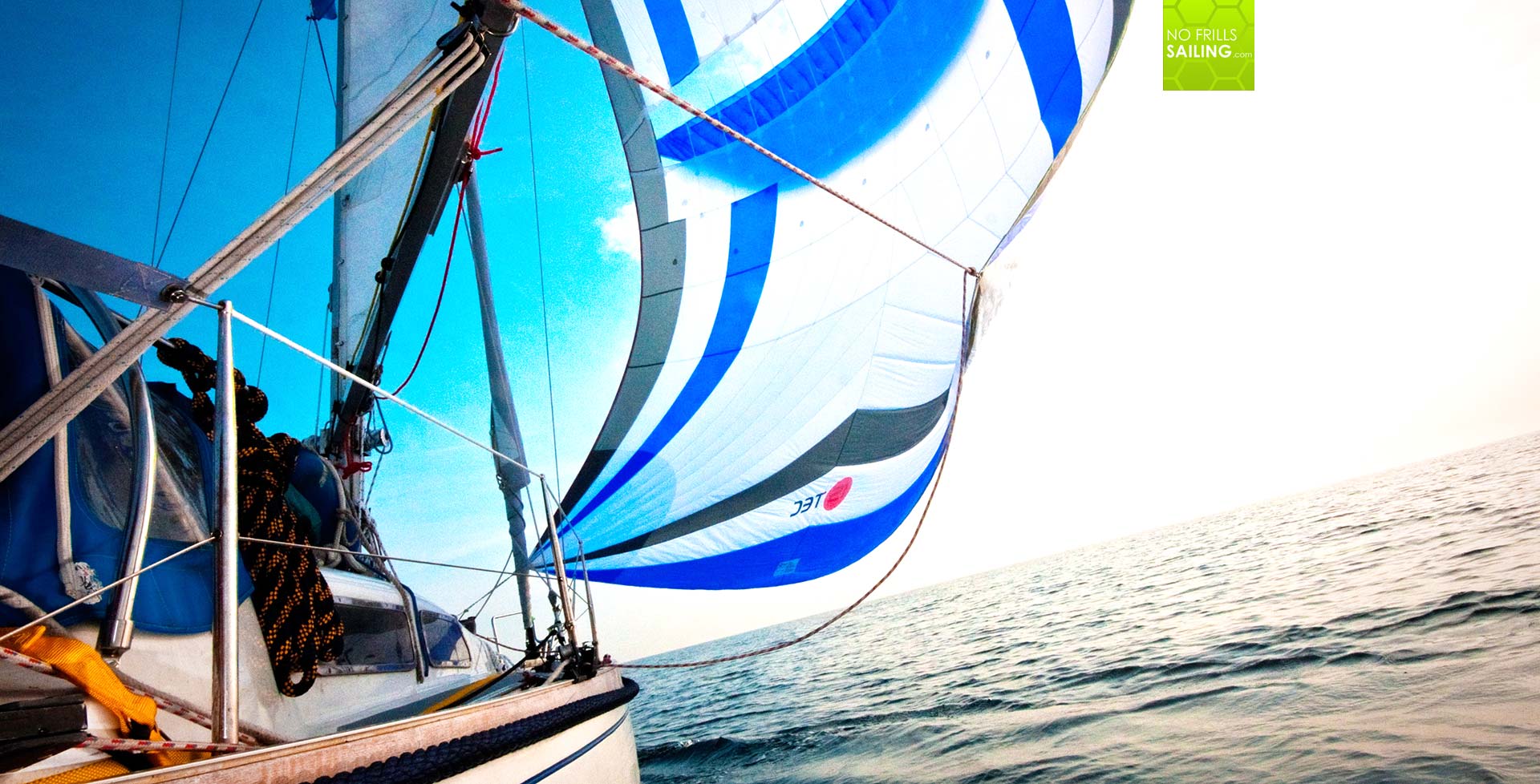
NO FRILLS SAILING.com “Based on your experience, what would you say is absolutely essential, equipment-wise, on a transat-sailing trip single handed?”
Hinnerk Weiler “I do not have to think about this very long: Essential, from my point of view, is the wind vane. It is just so super-easy, convenient, simple, reliable and trustworthy. No frills, no electric stuff and no electronics. This piece of equipment simply does what it is supposed to do and I used my wind vane extremely often. I would also say that some kind of satellite-based navigation aid is essential. Back in my days I used short-wave radio and I guess still today I´d rather prefer this solution over stellar digital data.”
NO FRILLS SAILING.com “Tell me, in regard to single handed sailing the Atlantic, what is in your opinion most overrated in regard to that topic?”
Hinnerk Weiler “Well, I´d say it´s the ocean itself. The Atlantic Ocean, in essence, is smaller than most people think. The distance Falmouth to Azores is the same as Flensburg to Gothenburg in Sweden … times four. What I want to say is that if you can sail a boat for two days through night and day you will be able to do it for 16 as well.”
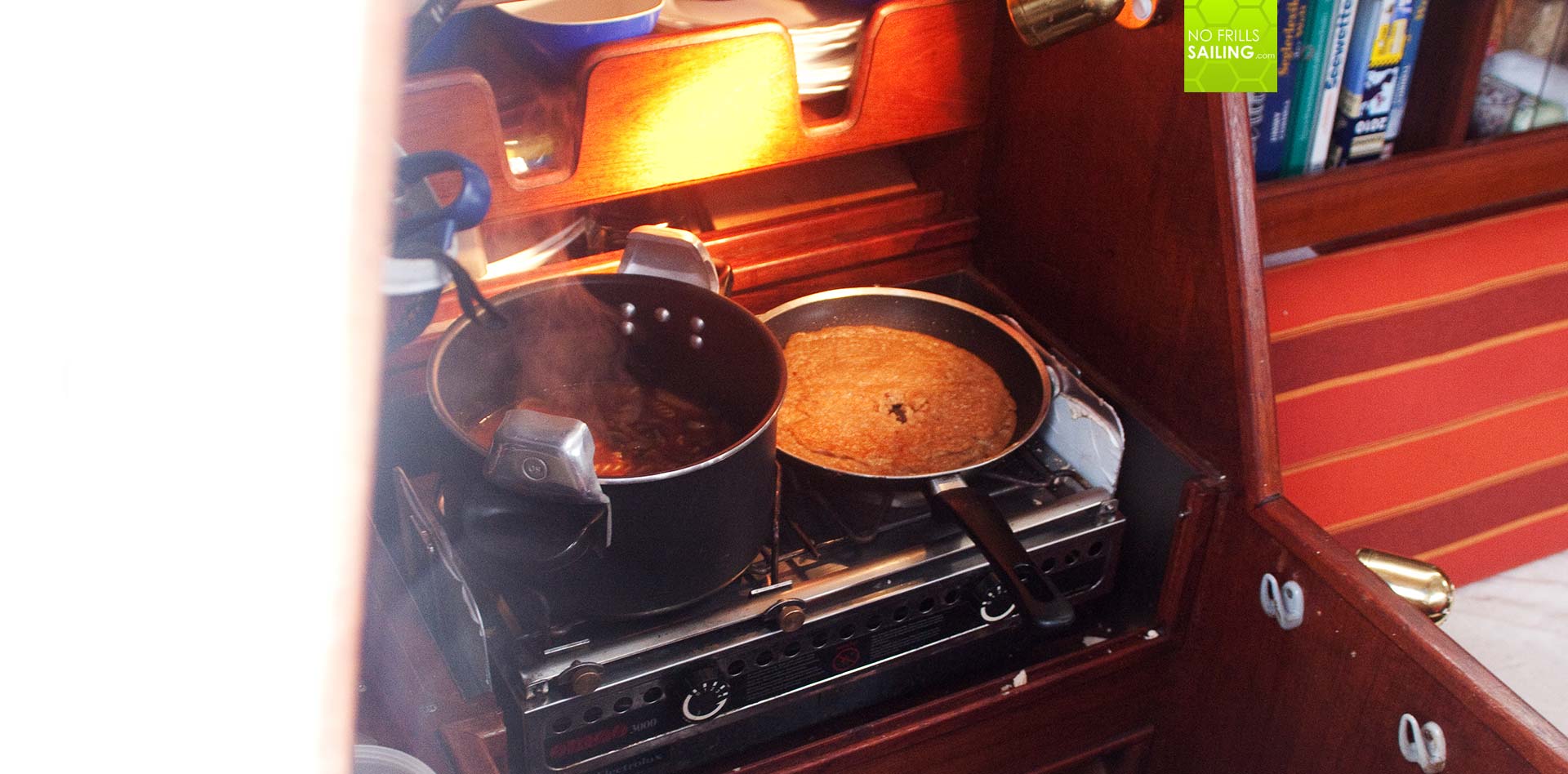
NO FRILLS SAILING.com “Let´s talk about food for a while. How did you calculate your demand for water and food to take with you? How did you stack your boat with provisions, maybe relation fresh to durable? What did pay off, what went wrong?”
Hinnerk Weiler “Again, I did not calculate nor did I come up with an elaborate plan. For the first lef for example, that has been Falmouth-Azores, I thought it would take 12 days. So when I went shopping, by feel, I bought enough for 30 days. And that worked for the most part. Naturally I wanted most of my food being fresh. I my provisions I had a system where I stacked the food in a way that after consuming all of the fresh food I would arrive at a layer of canned Ravioli: That was the sign to go for a new supermarket. Out on the Atlantic Ocean I ate a lot of fresh vegetables and fruit. I went for fish – which turned out being super-easy. My first Tuna was a wonderful feast! Asking for what did not work … well, again, I am simple: Everything that does not work at home won´t work on a boat as well.”
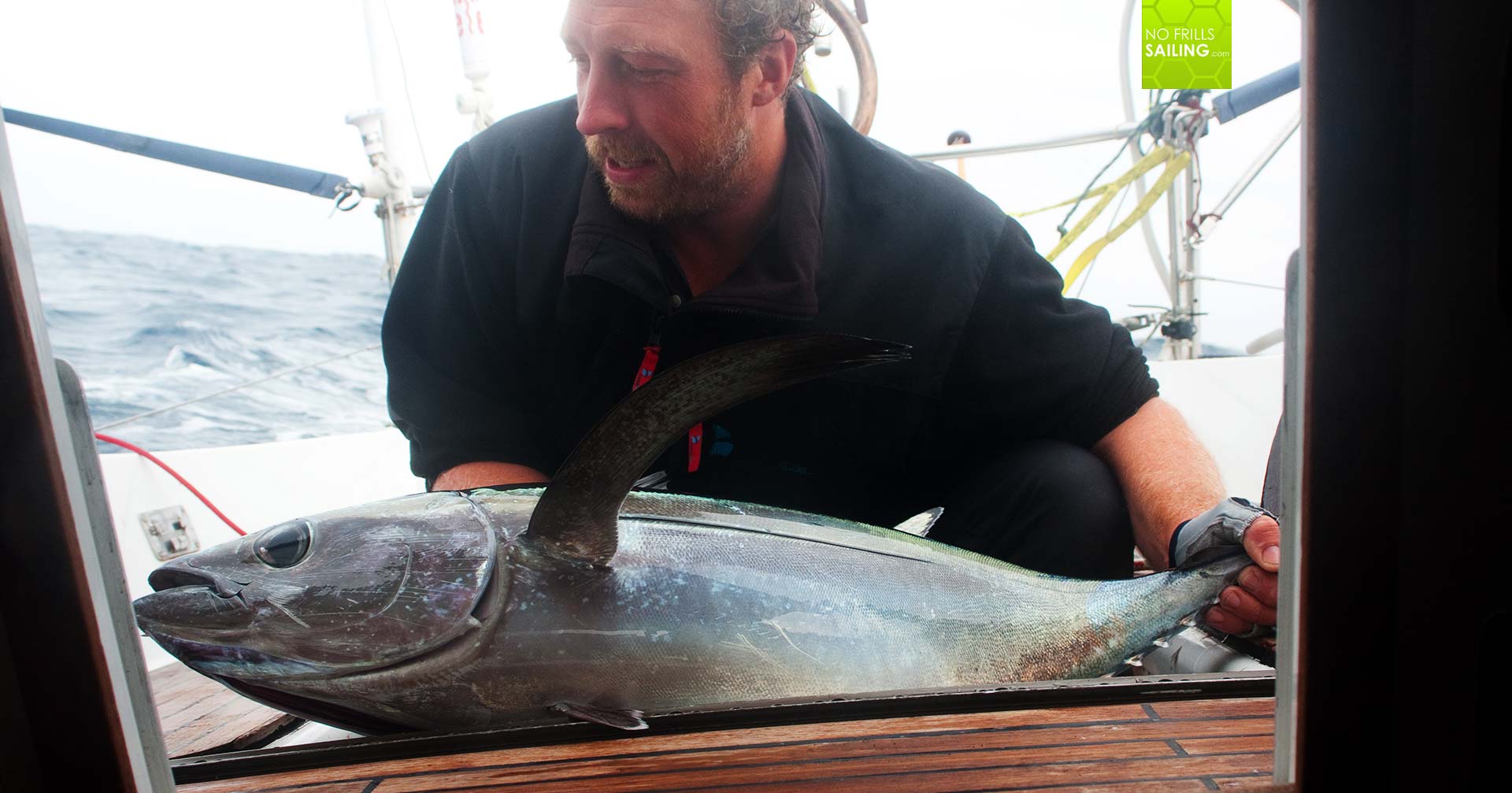
NO FRILLS SAILING.com “How did you prepare for your solo transat experience sailing-wise? Any special sailing skills-training?”
Hinnerk Weiler “Simple again: Miles, miles and miles! I mean, as a German you know it, mostly we sail in the Baltic Sea, which is very cool but you have the next marina within an 8 hour sail the least. So, I prepared myself to sail for 3 consecutive days through the Baltic – to Helsinki. It must not be a exceptional case to sail non-stop day and night, but a custom. I began to train myself to sail 24 hours, live by the classic egg-timer. I also trained myself to eat aboard: There is a difference between enjoying your cereals in a 30 degrees heeling roller coaster or in the sunny cockpit moored in a 4-star-marina.”
NO FRILLS SAILING.com “Egg-timer is interesting: Tell me more about your idea of sleep-management, day/night-routine and how later the real thing worked out underway.”
Hinnerk Weiler “Well, as I said, I was sailing single handed before my transat-trip so I was accustomed to live by the egg-timer. I used a classy analogue timer. Depending on where I was and what the traffic was like, I checked the situation every 20 minutes. Maybe that´s interesting: I used the times during daytime as well: How fast can you deviate from situational awareness, for example, when you are preparing a meal down below or reading a book? 30, 45 minutes are gone past fast! So, in essence, when I started to sail across the Atlantic Ocean I went for this 20-minute-scheme for the first 3 days. After this I had reached an area of the Ocean where there is rarely any traffic, I was able to re-calibrate proximity alert and the risk of “meeting” a large tanker for example was minimal.”

NO FRILLS SAILING.com “Did you have any near-meets with tankers?”
Hinnerk Weiler “Very rarely and mostly digital. But my fear, to be honest, was more to be hit by a sleeping sailor like myself (laughs). I remember on two occasions having a tense time to evaluate what this strange green light to port was … and it turned out it have both times be other sailors.”
NO FRILLS SAILING.com “What was your big learning? What stays out from all the experiences you´ve had on your first solo transat sailing adventure?”
Hinnerk Weiler “Well, the big two, as I would put it, are: First of all, stay calm! No matter what happens, stay calm! It does not matter what is broken, try to sit down and evaluate your situation. Think about it, why has it broken down in the first place? What can I do about it? Can I repair it, replace it or substitute it with something else? Stay calm, that´s a golden rule for me. And second: Really, no – really! – check weather thoroughly and stick to the forecasts! That´s the only thing that can really break you, so if you are lazy with everything else – be precise and professional with weather planning!”
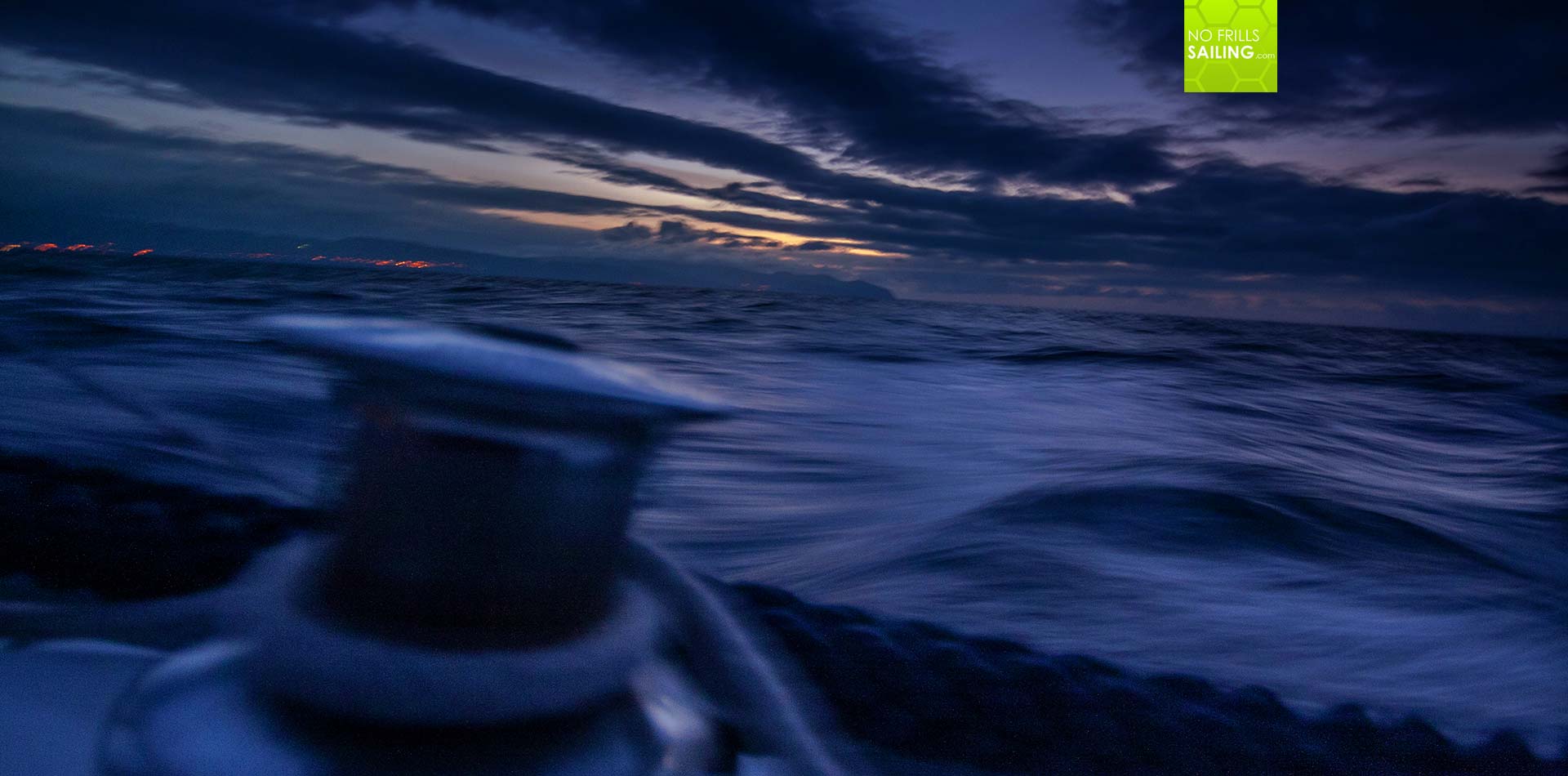
Thank you, Hinnerk, for this wonderful and valuable insight! After our interview, I went to shop the Imray 100 paper chart of the Atlantic Ocean, I pinned a map of the Caribbean over my bed in the sleeping room of my flat and I shopped one egg-timer (plus one as spare) for my boat. Thanks for the inspiration, Hinnerk!
Hinnerk´s Atlantic Loop lasted for 6 years as he, in legs, travelled from Falmouth via Azore Islands to the Caribbean, sailed the U.S. East Coast to Halifax. PAULINCHEN, the pre-Swan, was sold by Hinnerk in Panama. The 44 years old journalist keeps on sailing – and had bought a new old boat recently.
Check out all articles connected with my Atlantic Loop-project by clicking the hashtag #atlanticloop
You may also find interesting:
Sailing (half way) around the world
Love and sailing: How a couple forged their relationship on a heeling yacht
Baltic Loop: 3.000 miles alone
